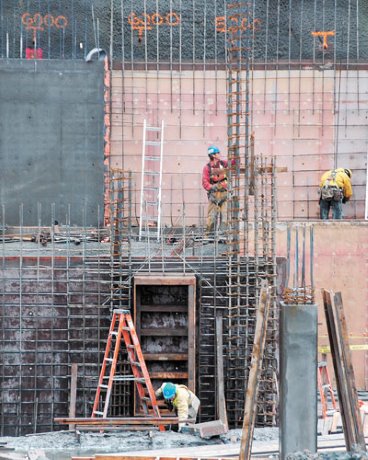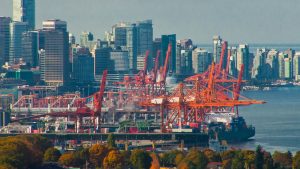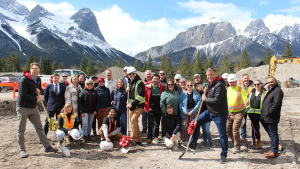Although it is possible that Discovery Green in Burnaby, British Columbia will achieve LEED Platinum certification, Tom Douglas, Discovery Parks’ director of leasing, is cautious about predicting the level of certification the building will eventually receive.
Green Building
Vancouver
The five-storey Discovery Place project in Burnaby, British Columbia, has the potential to produce one of the greenest buildings in Canada.
Discovery Parks is a private Canadian trust that designs and builds office and research space for technology and biotechnology companies.
Discovery Place is B.C.’s original research park and has 15 buildings with more than 500,000 square feet of space in Burnaby.
Excavation work for Discovery Green, which is being built on the last available piece of land at Discovery Place, began in August 2007.
Currently, excavation work is still being undertaken, while the process of pouring the foundation and footing for the first level of underground parking is being finished.
Construction should reach grade level by March 2008.
Upon completion in March 2009, Discovery Green may be one of the highest-performing LEED (leadership in energy and environmental design) Gold certification commercial buildings in Canada.
Even though it is possible that Discovery Green will achieve LEED Platinum certification, Tom Douglas, Discovery Parks’ director of leasing is being cautious about predicting the level of certification the building will receive.
“We have been reluctant to use the P word (Platinum). If we don’t achieve it then there is the perception that we have failed,” Douglas said.
“The number of points we have now are projected to be high enough to reach Gold level and could reach Platinum. However, we have not yet submitted the initial application (to the Green Building Council).”
He added that no one can predict what level any building will be certified at, because certification won’t happen until the building is complete and they (the Green Building Council) come up for an inspection.
Another reason why it is difficult to determine if the building will perform at a Gold or Platinum level is that the LEED certification process is carried out in two stages.
The Green Building Council looks at the base building, which includes the Core and the Shell.
The construction of tenant improvements are examined later on. This unique rating system was created for newly constructed tenant spaces and enables tenants to pursue LEED-Commercial Interior Certification.
Cobalt Engineering provided mechanical and electrical engineering design services, as well as LEED consulting services to guide this project toward achieving its sustainability goals.
Colbalt has incorporated several features in the building’s mechanical and electrical systems that are new to North America.
“There are quite a few new technologies, such as a variant refrigerant flow system, that are new in North America, but have been used in other parts of the world for a long time,” said Goran Ostojic, a partner with Cobalt Engineering.
This system offers simultaneous heating and cooling, exact temperature control and allows heat recovery from different parts of the building.
“The Encelium lighting control system is being used in Western Canada for the first time. The lighting system offers light dimming, occupancy sensors, day light options and personal adjusting of light from a personal computer,” Ostojic said.
Other major features of the building are demand control ventilation, which means heat is recovered and transferred from exhaust air and incoming air.
There is also a water harvesting tank, which collects rainwater from the site and uses it for irrigation and toilet flushing.
Preliminary modeling by Cobalt estimates that the building is 50 per cent more energy efficient than the LEED reference building. Ostojic said that the design team is not far away from completing the application for LEED certification and that the building is on the border line between Gold and Platinum certification.
The Discovery Green project team consists of Bunting Coady Architects (prime consultant and architect), Read Jones Christoffersen (structural engineer and envelope consultant), Cobalt Engineering (mechanical and electrical consultant and LEED consultant), Eckford + Associates (landscape architect), Hunter Laird Engineering (civil engineer), Jacques Whitford Ltd. (geotechnical engineer), Applecross Projects Ltd. (project manager) and Stuart Olson Constructors (general contractor).











Recent Comments
comments for this post are closed